February 28 Incident

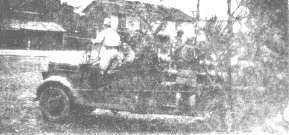

The February 28 Incident (Chinese: 二二八事件) or February 28 Massacre, also known as 228 Incident, was an anti-government uprising in Taiwan. Taking its name from the date of the incident, it began on February 27, 1947, and was violently suppressed by the Kuomintang-led Republic of China government, which killed thousands of civilians beginning on February 28. Estimates of the number of deaths vary from 10,000 to 30,000 or more.[1] The massacre marked the beginning of the Kuomintang's White Terror period in Taiwan, in which thousands more inhabitants vanished, died, or were imprisoned. This incident is one of the most important events in Taiwan's modern history, and is a critical impetus for the Taiwan independence movement.
In 1945, 50 years of Japanese rule ended when Japan lost World War II. In October, the United States, on behalf of the Allied Forces, handed temporary administrative control of Taiwan to the Kuomintang-administered Republic of China (ROC) under General Order No. 1 to handle the surrender of Japanese troops and ruling administration. Local inhabitants became resentful of what they saw as high-handed and frequently corrupt conduct on the part of the Kuomintang (KMT) authorities, their arbitrary seizure of private property, and their economic mismanagement. The flashpoint came on February 27 in Taipei, when a dispute between a cigarette vendor and an officer of the Office of Monopoly triggered civil disorder and an open rebellion that lasted for days.[2] The uprising was violently put down by the military of the Republic of China and the island was placed under martial law.
The subject was officially taboo for decades. On the anniversary of the event in 1995, President Lee Teng-hui addressed the subject publicly, a first for a Taiwanese head of state. The event is now openly discussed and details of the event have become the subject of government and academic investigation. February 28 has been designated Peace Memorial Day (Chinese: 和平紀念日; pinyin: hépíng jìniànrì), an official public holiday. Every February 28, the president of the ROC gathers with other officials to ring a commemorative bell in memory of the victims. The president bows to family members of 2/28 victims and gives each one a certificate officially exonerating any victims previously blacklisted as enemies of the state. Monuments and memorial parks to the victims of 2/28 have been erected in a number of Taiwanese cities, including Kaohsiung and Taipei.[3][4] Taipei's former "Taipei New Park" was rededicated as 228 Peace Memorial Park and houses the National 228 Memorial Museum to commemorate the tragic incident, which opened on February 28, 1997, and re-opened on February 28, 2011, with new permanent exhibits.[5][6]
| February 28 Incident | |||||||||||||
| Chinese | 二二八事件 | ||||||||||||
|---|---|---|---|---|---|---|---|---|---|---|---|---|---|
| |||||||||||||
| February 28 Massacre | |||||||||||||
| Traditional Chinese | 二二八大屠殺 | ||||||||||||
| Simplified Chinese | 二二八大屠杀 | ||||||||||||
| |||||||||||||
Naming
The "Two-Two-Eight Incident" name derives from the "year-month-day" date format convention used for dates in Chinese. Chinese languages do not have common names for the months, so months are given as numbers and dates are given in the form "a-b-c-d year, x month, y day, with all numbers being read out as cardinals without any leading zeroes. With the incident dated February 28, 1947, the name is rendered "one nine four seven year, two month, two (tens) eight day". For brevity just the numbers are given, and, as a date of significance, the day and month without the year suffices as the name. Other historical events named using the same conventions as the "Two-Two-Eight Incident" include the May Fourth Movement (May 4, 1919) the "Five-Four Movement", the Tiananmen Incident (April 5, 1976) the "Four-Five Movement" and the Tianamen Square protests (June 4, 1989) the "Six-Four Incident".
Background
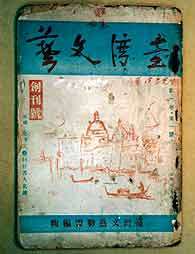
During the 50 years of Japanese rule in Taiwan (1895–1945), Japan developed Taiwan's economy and raised the standard of living for most Taiwanese people, building up Taiwan as a supply base for the Japanese main islands. Consequently, Taiwanese perceptions of the Japanese rule were more favorable than perceptions in other parts of East and South East Asia. Taiwanese adopted Japanese names and practiced Shinto, while the schools instilled a sense of "Japanese spirit" in students. By the time World War II began, many Taiwanese were proficient in both the Taiwanese language, a derivative of the Hokkien language which originated in Fujian province, and Japanese.
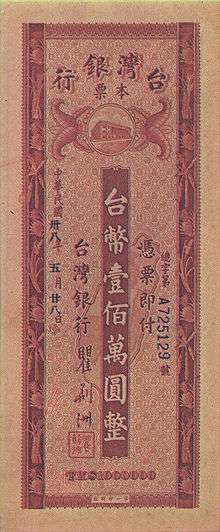
After World War II, Taiwan was placed under the administrative control of the Republic of China to provide stability until a permanent arrangement could be made. Chen Yi, the Governor-General of Taiwan, arrived on October 24, 1945, and received the last Japanese governor, Ando Rikichi, who signed the document of surrender on the next day. Chen Yi then proclaimed the day as Retrocession Day to make Taiwan part of the Republic of China, although there were questions about the legality of doing so.[7]
The Kuomintang (KMT) troops from Mainland China were initially welcomed by local inhabitants, but their behavior and the KMT administration led to Taiwanese discontent during the immediate postwar period. As Governor-General, Chen Yi took over and sustained the Japanese system of state monopolies in tobacco, sugar, camphor, tea, paper, chemicals, petroleum refining, mining and cement. He confiscated some 500 Japanese-owned factories and mines, and homes of former Japanese residents. Economic mismanagement led to a large black market, runaway inflation and food shortages. Many commodities were compulsorily bought cheaply by the KMT administration and shipped to Mainland China to meet the Civil War shortages where they were sold at very high profit furthering the general shortage of goods in Taiwan. The price of rice rose to 100 times its original value between the time the Chinese took over to the spring of 1946. It inflated further to 400 times the original price by January 1947.[8] Carpetbaggers from Mainland China dominated nearly all industry, political and judicial offices, displacing the Taiwanese who were formerly employed; and many of the ROC garrison troops were highly undisciplined, looting, stealing and contributing to the overall breakdown of infrastructure and public services.[9] Because the Taiwanese elites had met with some success with self-government under Japanese rule, they had expected the same system from the incoming ruling Chinese government. However, the Chinese Nationalists opted for a different route, aiming for the centralization of government powers and a reduction in local authority. The KMT's nation-building efforts went this way because of unpleasant experiences with the centrifugal forces during the Warlord Era in 1916–1928 that had torn the government in China. The different goals of the Chinese Nationalists and the Taiwanese, coupled with cultural and language misunderstandings served to further inflame tensions on both sides.
Uprising and crackdown

.jpg)
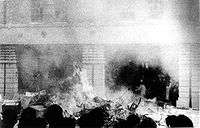


On the evening of February 27, 1947, a Tobacco Monopoly Bureau enforcement team in Taipei went to the district of Taiheichō (太平町), Twatutia (present-day Nanjing West Road), where they confiscated contraband cigarettes from a 40-year-old widow named Lin Jiang-mai (林江邁) at the Tianma Tea House. When she demanded their return, one of the men holding a gun hit Lin's head with a pistol, prompting the surrounding Taiwanese crowd to challenge the Tobacco Monopoly agents. As they fled, one agent shot his gun into the crowd, killing one bystander. The crowd, which had already been harboring many feelings of frustration from unemployment, inflation and corruption of the Nationalist government, reached its breaking point. The crowd protested to both the police and the gendarmes, but was mostly ignored.[10]
Violence flared the following morning on February 28. Security forces at the Governor-General's Office tried to disperse the crowd. Some fired on the protesters who were calling for the arrest and trial of the agents involved in the previous day's shooting, resulting in several deaths.[11] Formosans took over the administration of the town and military bases on March 4 and forced their way into local radio station to protest.[12][13] By evening, martial law had been declared and curfews were enforced by the arrest or shooting of anyone who violated curfew.
For several weeks after the February 28 Incident, the Taiwanese civilians controlled much of Taiwan. The initial riots were spontaneous and somewhat violent. Within a few days the Taiwanese were generally coordinated and organized, and public order in Taiwanese-held areas was upheld by volunteer civilians organized by students, and unemployed former Japanese army soldiers. Local leaders formed a Settlement Committee, which presented the government with a list of 32 Demands for reform of the provincial administration. They demanded, among other things, greater autonomy, free elections, surrender of the ROC Army to the Settlement Committee, and an end to governmental corruption.[13] Motivations among the various Taiwanese groups varied; some demanded greater autonomy within the ROC, while others wanted UN trusteeship or full independence.[14] The Taiwanese also demanded representation in the forthcoming peace treaty negotiations with Japan, hoping to secure a plebiscite to determine the island's political future.
Outside of Taipei, it was less peaceful. Mainland Chinese also experienced violence. Public places like banks and post offices were looted. Some had to flee for Military Police protection. A few smaller groups formed, including the Communist-inspired "27 Brigade" (二七部隊). They looted 3 machine guns, 300 rifles, and hand grenades from military arsenals in Taichung and Pingtung. The armed Taiwanese shot or injured ~200 Nationalist Army soldiers which quickly precipitated the house arrest or execution of those who participated in the rebellion.
The Nationalist Government under Chen Yi stalled for time while assembling a large military force in Fujian. Upon arrival on March 8, the ROC troops launched a crackdown. The New York Times reported, "An American who had just arrived in China from Taihoku said that troops from the mainland [China] arrived there on March 7 and indulged in three days of indiscriminate killing and looting. For a time everyone seen on the streets was shot at, homes were broken into and occupants killed. In the poorer sections the streets were said to have been littered with dead. There were instances of beheadings and mutilation of bodies, and women were raped, the American said."[1]
By the end of March, Chen Yi had ordered the imprisonment or execution of the leading Taiwanese organizers he could identify. His troops reportedly executed (according to a Taiwanese delegation in Nanjing) between 3,000-4,000 people throughout the island. The exact number is still undetermined as only 300 Taiwanese families applied for another compensation as recently as 1990.[15] Some of the killings were random, while others were systematic. Taiwanese elites were among those targeted, and many of the Taiwanese who had formed self-governing groups during the reign of the Japanese were also victims of the 228 Incident. A disproportionate number of the victims were Taiwanese high school students. Many had recently served in the Imperial Japanese Army, having volunteered to serve to maintain order. Mainland Chinese civilians who fled were often beaten by Taiwanese.[13]
The initial 228 purge was followed by discovery of communist infiltrators from communist mainland China under one-party rule, in what was termed "White Terror", which lasted until the end of 1987. Thousands of people, including both mainland Chinese and Taiwanese, were imprisoned or executed for their dissent, leaving a small minority of Taiwanese among them with a deep-seated bitterness towards what they term the Nationalist regime and by extension, all Chinese not born in Taiwan or anyone supporting the KMT or CCP. People were constantly vanishing, and the people were terrified that they may be captured and executed.
Legacy
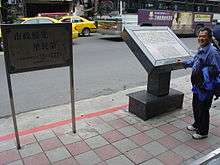

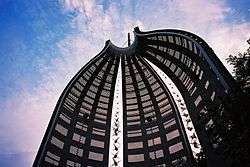
.jpg)
_gives_a_speech_at_the_228_Memorial_in_Taipei.jpg)
For several decades, it was taboo to openly criticize the 228 Massacre Incident. The government hoped that the execution of Governor Chen Yi and financial compensation for the victims had quelled resentment. In the 1970s the 228 Justice and Peace Movement was initiated by several citizens' groups to ask for a reversal of this policy, and, in 1992, the Executive Yuan promulgated the "February 28 Incident Research Report."[16] Then-President and KMT-chairman Lee Teng-hui, who had participated in the incident and was arrested as an instigator and a Communist sympathizer made a formal apology on behalf of the government in 1995 and declared February 28 a day to commemorate the victims.[17] Among other memorials erected, Taipei New Park was renamed 228 Memorial Park.
Since the lifting of martial law in 1987, the government has set up the 228 Incident Memorial Foundation, a civilian reparations fund supported by public donations for the victims and their families. Many descendants of victims remain unaware that their family members were victims, while many of the families of victims from Mainland China did not know the details of their relatives' mistreatment during the riot. Those who have received compensation more than two times are still demanding a trial of the still-living soldiers who were responsible for death of their loved ones.
Prior to the 228 massacre, many Taiwanese hoped for a greater autonomy from China. The failure of conclusive dialogue with the ROC administration in early March, combined with the feelings of betrayal felt towards the government and China in general are widely believed to have catalyzed today's Taiwan independence movement and subsequently the Taiwan Name Rectification Campaign after democratization.[13]
On February 28, 2004, thousands of Taiwanese participated in the 228 Hand-in-Hand Rally. They formed a 500-kilometer (310 mi) long human chain, from Taiwan's northernmost city to its southern tip, to commemorate the 228 Incident, to call for peace, and to protest the People's Republic of China's deployment of missiles aimed at Taiwan along the coast of Taiwan Strait.
In 2006, the Research Report on Responsibility for the 228 Massacre was released after several years of research. The 2006 report was not intended to overlap with the prior (1992) 228 Massacre Research Report commissioned by the Executive Yuan. Chiang Kai-shek is specifically named as bearing the largest responsibility in the 2006 report.[18] However, some academics have disputed these conclusions, stating the departing Japanese colonial government was responsible by creating food shortages and causing inflation.[19]
2-28 Incident in art
A number of artists in Taiwan have addressed the subject of the 2-28 Incident since the taboo was lifted on the subject in the early 1990s.[20] The Incident has been the subject of music by Fan-Long Ko and Tyzen Hsiao and a number of literary works. Hou Hsiao-hsien's A City of Sadness, the first movie dealing with the events, won the Golden Lion at the 1989 Venice Film Festival.[21] The 2009 thriller Formosa Betrayed also relates the incident as part of the motivation behind Taiwan independence activist characters. Taiwanese metal band Chthonic's album Mirror of Retribution also makes several lyrical references to the 228 massacre. Taiwanese-American Julie Wu's novel The Third Son describes the event and its aftermath from the viewpoint of a Taiwanese boy.[22] In her 2013 novel, The 228 Legacy, author Jennifer J. Chow brings to light the emotional ramifications for those who lived through the events yet suppressed their knowledge out of fear. It focuses on how there was such an impact that it permeated throughout multiple generations within the same family.[23] Shawna Yang Ryan's novel, GREEN ISLAND (2016)[24] tells the story of the incident as it affects three generations of a Taiwanese family.
See also
- Formosa Betrayed (1965 book)
- History of Taiwan
- History of the Republic of China
- List of massacres in Taiwan
- The First 228 Peace Memorial Monument
- 228 Hand-in-Hand Rally (in 2004)
- Political status of Taiwan
- White Terror (Taiwan)
- Universal Declaration of Human Rights (1948)
References
- 1 2 Durdin, Tillman (March 29, 1947). "Formosa killings are put at 10,000". New York Times. Archived from the original on 24 April 2006. Retrieved 2006-04-22.
- ↑ Kerr & Stuart (1947), p. 4: "On the evening of February 27 certain armed Monopoly Bureau agents and special police agents set upon and beat a female cigarette vendor, who with her two small children had protested the seizure of her small cash as well as her allegedly untaxed cigarettes. She is reported to have died soon after as a result of the beating at police hands. An angered crowd set after the agents, who shot at random, killing one person before they escaped into a civil police station."
- ↑ 二二八紀念碑 Archived June 6, 2011, at the Wayback Machine.
- ↑ 新新聞521期:比較全台灣各地二二八紀念碑的碑文與形式
- ↑ Ko, Shu-ling; Chang, Rich; Chao, Vincent Y. (March 1, 2011). "National 228 museum opens in Taipei". Taipei Times. Retrieved November 14, 2014.
- ↑ Chen, Ketty W. (February 28, 2013). "Remembering Taiwan's Tragic Past". Taipei Times. Retrieved November 14, 2014.
- ↑ "Charter of the United Nations". Chapter XII: International Trusteeship System. United Nations. June 26, 1945. Archived from the original on 28 August 2010. Retrieved September 15, 2010.
- ↑ "Formosa After the War". Reflection on the 228 Event—The first gunshot. 2003. Archived from the original on 6 March 2006. Retrieved 2006-03-06.
- ↑ "This Is the Shame". Time Magazine. 1946-06-10. (Subscription required)
- ↑ 延平路昨晚查緝私煙隊,開槍擊斃老百姓 (民報社), 民報社 (in Chinese), Taiwan Ministry of Culture:National Repository of Cultural Heritage, 1947-02-28
- ↑ "Seizing-cigarettes Incident". Reflection on the 228 Event—The first gunshot. 2003. Archived from the original on 6 March 2006. Retrieved 2006-03-06.
- ↑ Durdin, Peggy (May 24, 1947). "Terror in Taiwan". The Nation. Archived from the original on 24 April 2006. Retrieved 2006-04-22.
- 1 2 3 4 Smith, Craig A (2008). "Taiwan's 228 Incident and the Politics of Placing Blame". Past Imperfect. University of Alberta. 14: 143–163. ISSN 1711-053X. Retrieved 13 November 2014.
- ↑ Durdin, Tillman (1947-03-30). "Formosans' Plea For Red Aid Seen". New York Times. Archived from the original on 15 February 2006. Retrieved 2006-03-06.
- ↑ "DPP questions former Premier Hau's 228 victim figures". The China Post. Taipei. February 29, 2012. Retrieved November 14, 2014.
- ↑ Kristof, Nicholas D. (April 3, 1992). "Taipei Journal; The Horror of 2-28: Taiwan Rips Open the Past". The New York Times. Retrieved November 20, 2014.
- ↑ Mo, Yan-chih (February 28, 2006). "Remembering 228: Ghosts of the past are yet to be laid to rest". Taipei Times. Retrieved November 14, 2014.
- ↑ Chen, Yi-shen (February 2005). "Research Report on Responsibility for the 228 Massacre, Chapter II: Responsibility on the part of the decision-makers in Nanjing". 228.org.tw. The 228 Memorial Foundation. Retrieved November 14, 2014.
- ↑ Shih, Hsiu-chuan (February 28, 2007). "Hardline academics blame Japan for 228 Incident". Taipei Times. Retrieved November 14, 2014.
- ↑ 228 Massacre, 60th Commemoration
- ↑ www.imdb.com: Beiqing chengshi (1989) - Awards
- ↑ Winterton, Bradley (May 7, 2014). "Book review: The Third Son". Taipei Times. Retrieved November 14, 2014.
- ↑ Bloom, Dan (Aug 19, 2013). "US author probes 'legacy' of the 228 Incident in novel". Taipei Times. Retrieved 7 May 2014.
- ↑ Green Island | Knopf Doubleday
Bibliography
- Kerr, George H.; Stuart, John Leighton (April 21, 1947). Memorandum on the Situation in Taiwan (Report). American Embassy, Nanking, China. Telegram No. 689. reprinted in United States relations with China, with special reference to the period 1944-1949, based on the files of the Department of State. Far Eastern Series. Compiled by Dean Acheson. Washington: U.S. Govt. Print. Off. August 1949. pp. 923–938. OCLC 664471448. Retrieved November 14, 2014.
- Kerr, George H. (1965). Formosa Betrayed. Boston: Houghton Mifflin. OL 5948105M.
- Lai, Tse-han; Myers, Ramon Hawley; Wei, Wou (1991). A Tragic Beginning: The Taiwan Uprising of February 28, 1947. Palo Alto: Stanford University Press. ISBN 9780804718295.
- Shackleton, Allan J. (1998) [1948]. Formosa Calling: An Eyewitness Account of Conditions in Taiwan during the February 28th, 1947 Incident. Upland, California: Taiwan Publishing Company. OCLC 419279752. Retrieved November 20, 2014.
- Wakabayashi, Masahiro (2003). "4: Overcoming the Difficult Past; Rectification of the 2-28 Incident and the Politics of Reconciliation in Taiwan". In Funabashi, Yōichi. Reconciliation in the Asia-Pacific. Washington, D.C.: United States Institute of Peace Press. pp. 91–109. ISBN 9781929223473. OCLC 51755853.
External links
| Wikimedia Commons has media related to 228 Incident of Taiwan, 1947. |
- "Taipei 228 Memorial Museum (臺北228紀念館)". culture.tw. Taiwan Ministry of Culture. Retrieved November 14, 2014.
- Hong, Keelung (February 28, 2003). My Search for 2-28 (Speech). Berkeley, California. Retrieved November 20, 2014.
- "The 228 Massacre, As Documented in the US Media". 2001. Archived from the original on June 25, 2007. Retrieved November 20, 2014.
- "Reflection on the 228 Event". Taiwan Human Rights InfoNet. 2003. Archived from the original on September 27, 2007. Retrieved November 20, 2014.
- "財團法人二二八事件紀念基金會" [228 Incident Memorial Foundation]. 2011. Retrieved November 20, 2014. (Chinese)
- Chu, Bevin (February 25, 2000). "Taiwan Independence and the 2-28 Incident". The Strait Scoop. Retrieved November 20, 2014.
- "Taiwan Yearbook 2006: The ROC on Taiwan — February 28 Incident". Taiwan Government Information Office. Archived from the original on August 1, 2007. Retrieved November 20, 2014.
- "Declaration of Formosan Civil Government 福爾摩沙平民政府宣言". 2009. Retrieved November 20, 2014.
- "〈社論〉二二八不是內部鎮壓而是國際罪行" [Editorial: 228 was not internal repression, but an international war crime instead]. Liberty Times. Taipei. February 28, 2007. Retrieved November 20, 2014. (Chinese)
- "Editorial: Historical record is key to justice". Taipei Times. February 28, 2007. Retrieved November 20, 2014.